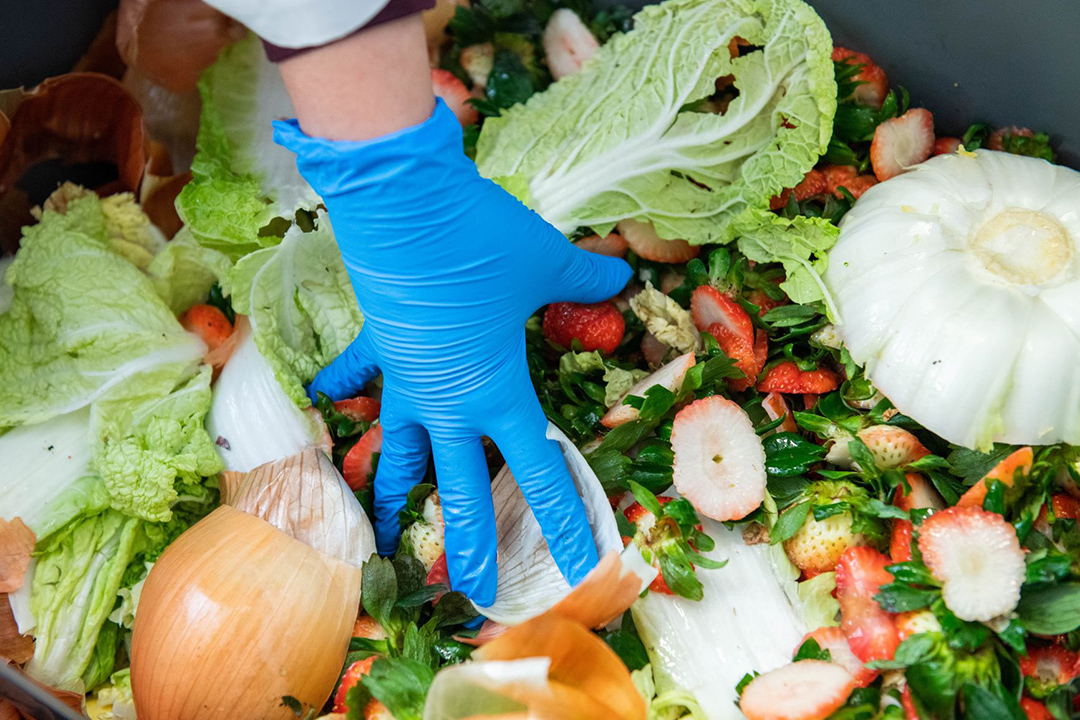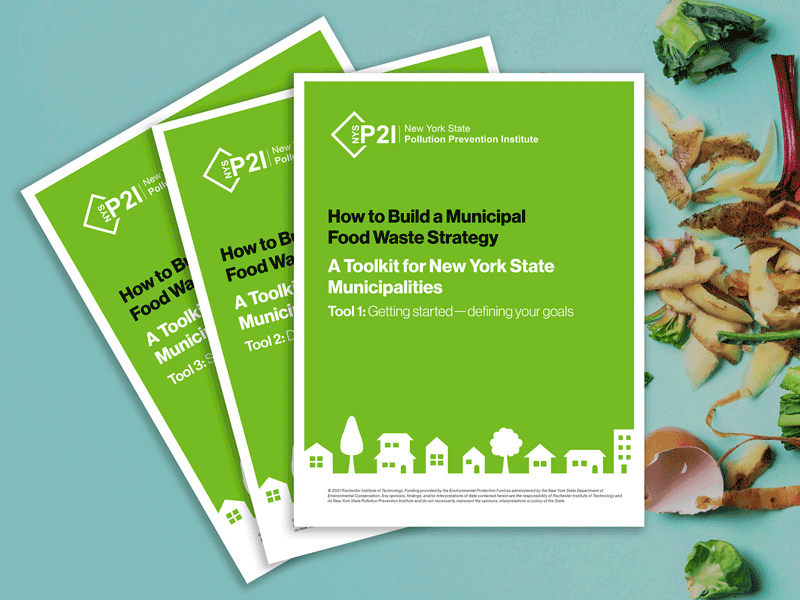NYSP2I creates new tools to help New York municipalities reduce wasted food
Free toolkit helps municipalities design, implement, and manage programs at local level
Gabrielle Plucknette-DeVito
More than 100 million tons of food are wasted each year in the United States. NYSP2I has developed a free, interactive toolkit for state municipalities to design, implement, and manage food waste programs at the local level.
The New York State Pollution Prevention Institute (NYSP2I)—led by Rochester Institute of Technology’s Golisano Institute for Sustainability—has developed a free, interactive toolkit that municipalities can use to design, implement, and manage food waste programs at the local level.
The three-part guide, How to Build a Municipal Food Waste Strategy: A Toolkit for New York State Municipalities, is designed to assist communities large and small with building programs for reducing wasted food that are realistic and results-driven.
How to Build a Municipal Food Waste Strategy—along with additional resources and case studies—is publicly available on the NYSP2I Resource Database.
Studies show that more than 100 million tons of food are wasted each year in the United States, meaning that all of the money, resources, and labor that go into its production and all the nutrition it contains are lost with it. Through its work in recent years, NYSP2I has learned that many communities want to avoid these losses by helping residents and businesses better manage wasted food.
Community-based programs to reduce wasted food are essential to achieving the U.S. 2030 Food Loss and Waste Reduction Goal (2015). These may include home composting, new municipal infrastructure, or increased education and outreach.
In New York state, municipal-led efforts to curb wasted food could play important roles in meeting the state’s climate targets set in the 2019 Climate Leadership and Protection Act (CLCPA) as well as implementing the state’s Food Donation and Food Scraps Recycling Law, while offering practical ways for households and businesses to save money.
“The New York State Pollution Prevention Institute is thrilled to be able to share this brand new toolkit with municipalities working on food waste reduction in New York state,” said Charles Ruffing, NYSP2I’s director. “Our food waste experts have distilled years of experience into this resource full of tips, advice, and guidance to help any municipality successfully start or grow a food waste program. We are looking forward to seeing the impact that municipalities make with it across the state.”
The action-oriented toolkit gives municipal planners guidance on how to set realistic goals, design and conduct a pilot, and scale up a pilot into a full-fledged program. It covers the intricacies of stakeholder engagement, data and information gathering, and the importance of aligning actions to specific goals.
How to Build a Municipal Food Waste Strategy—along with additional resources and case studies—is publicly available on the NYSP2I Resource Database.













